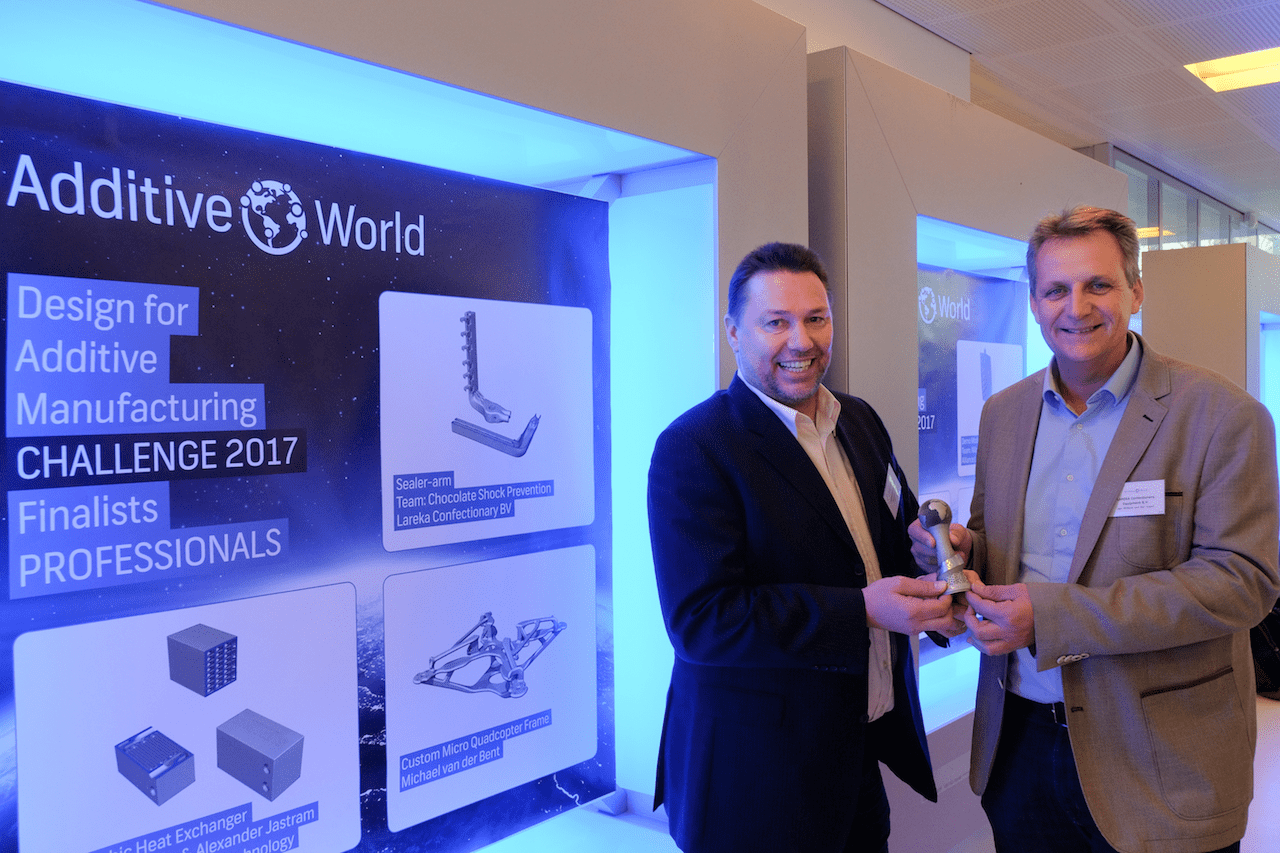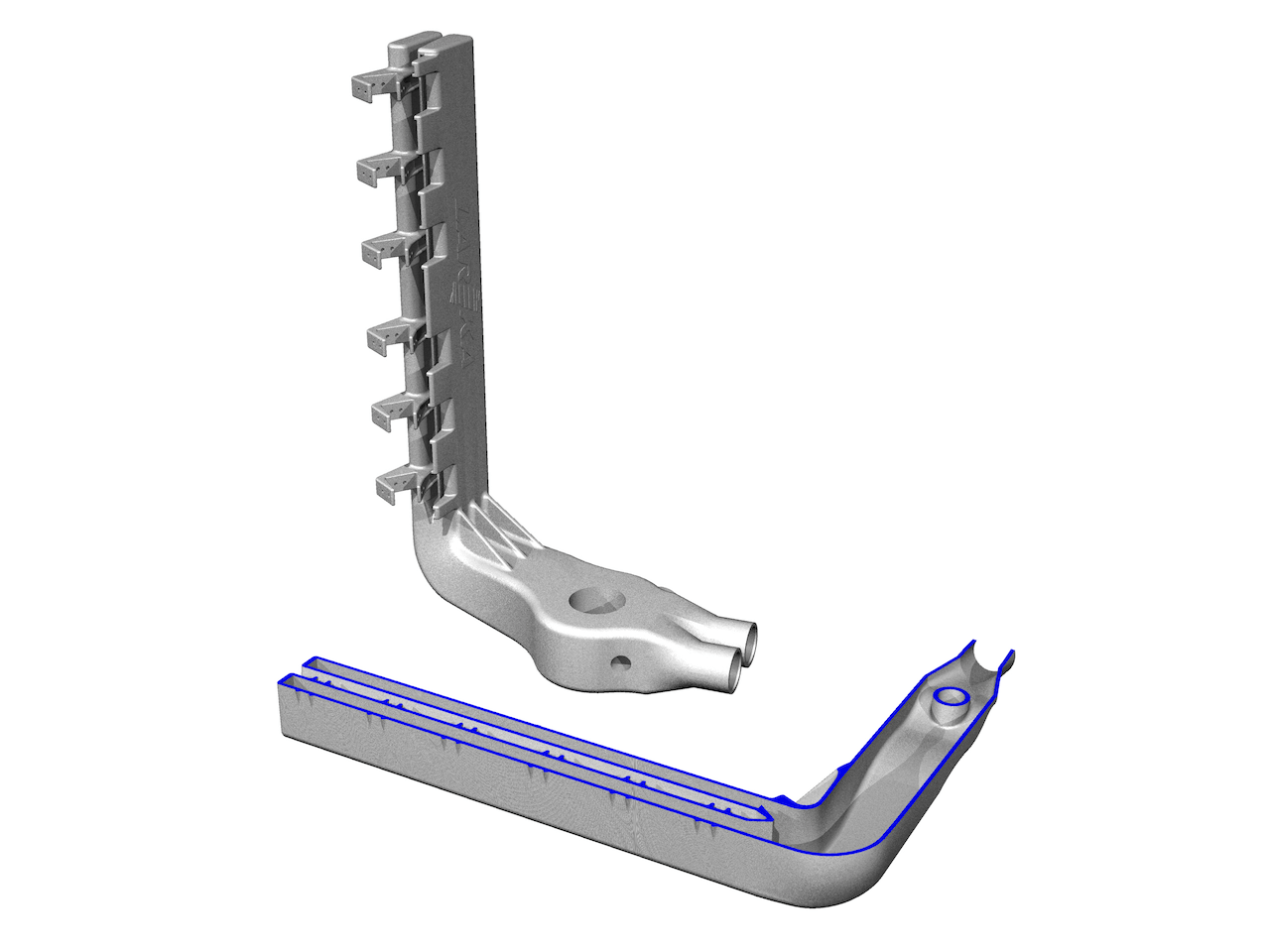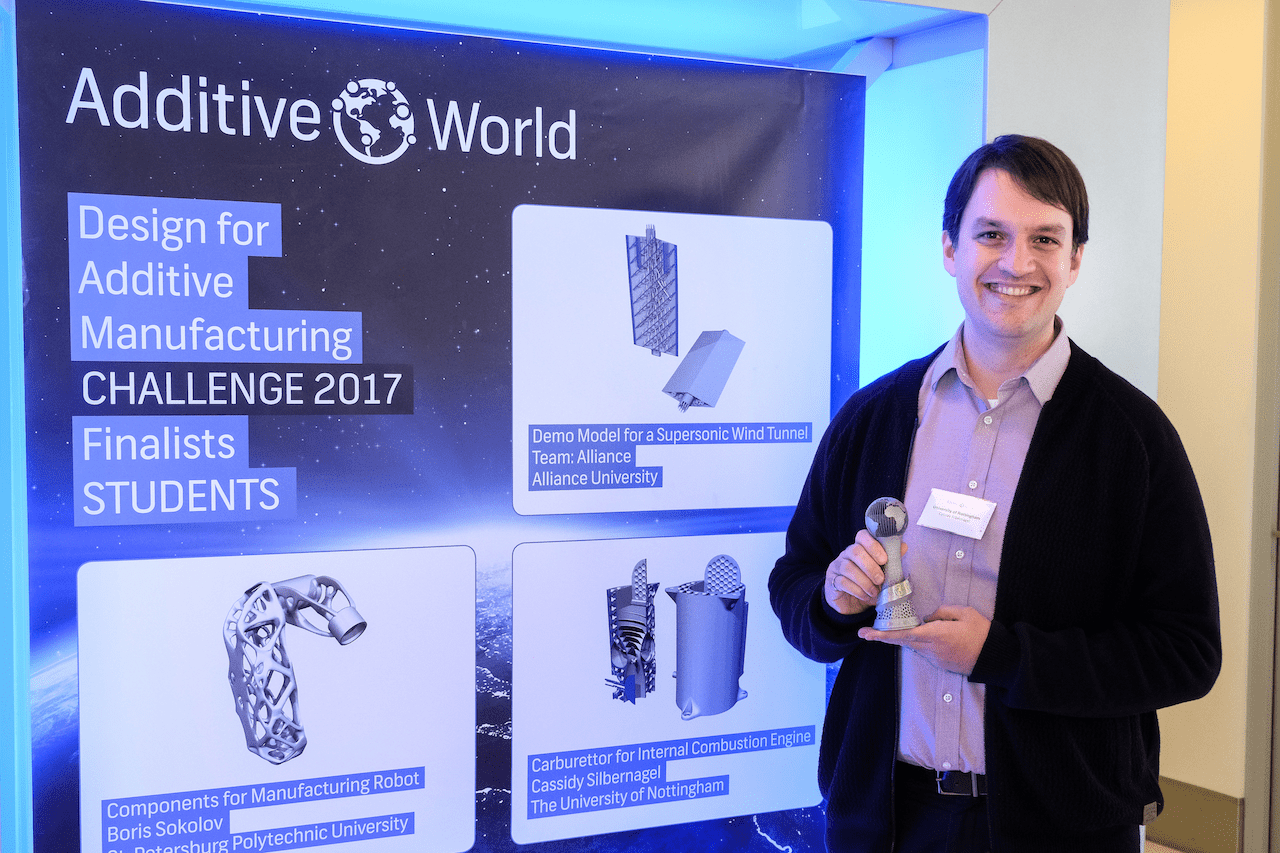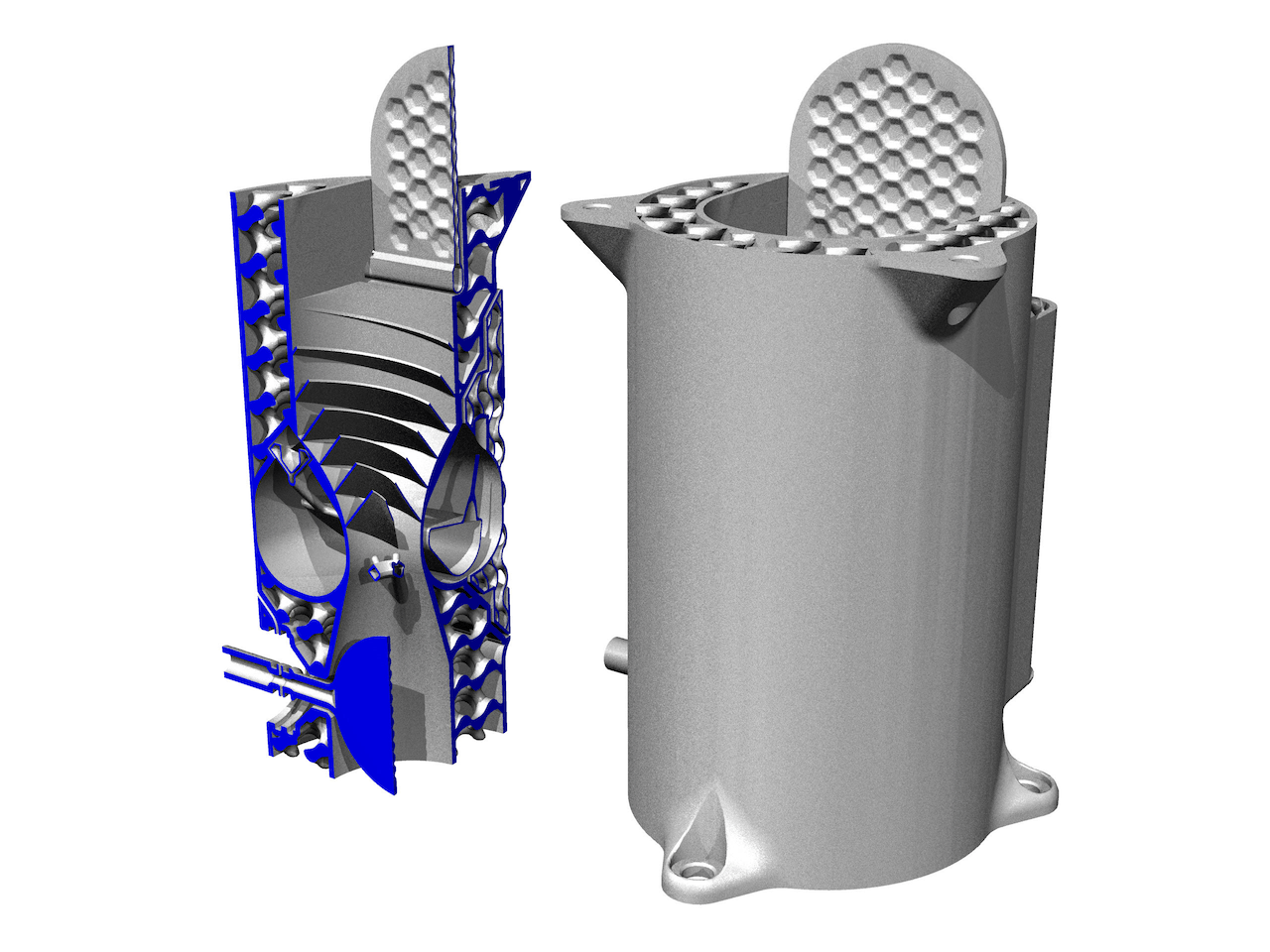
The winners of the Additive World Design for Additive Manufacturing Challenge 2017 have been chosen by a jury and there are some very interesting projects on the list.
The Additive World Design for Additive Manufacturing Challenge 2017 is an annual contest held in conjunction with Additive World in Eindhoven. The goal of the project is to stimulate 3D thinking among students and engineers towards practical solutions that leverage 3D technology in ways not previously attempted.
I’m fascinated by such events because there are different motivations present. Students in particular are not held by corporate objectives, financial constraints or other administrative baggage and their minds are free to conceive unusual concepts that others may not have. Sometimes such projects turn out to be impractical, but just as often they are indeed revolutionary.
So what happened in this challenge?
The “Professional” category was won by a team from the Lareka Confectionary Equipment company, a firm specializing in the unique business of marketing equipment designed solely for packaging confectionaries.

Their entry was a sealer arm intended for inclusion in their future equipment. What’s interesting is that their new design was able to create more consistent operating temperatures, which results in a higher quality packaging output for chocolate confectionaries. I think I should learn more about this topic, as it seems there is more to food packaging than I ever imagined.
In addition, the sealer arm’s design included 50 fewer components than used in current designs. This is a proper leveraging of 3D technology, where the old manufacturing constraints are entirely discarded when conceiving a new design.

The other winner was in the Student category, where University of Nottingham’s Cassidy Silbernagel designed a carburetor that had an amazing amount of 3D leverage, including:
- Integrated moving parts, which reduce assembly time
- Lightweight lattice structures to reduce weight and material cost
- Design optimized to reduce support structure requirements

These features are characteristic of production, where the objective is to make products in the most efficient and effective manner, far different from prototyping, where the (at least initial) objective is to simply make something that works.
In all the event attracted 76 entrants, some individuals and some teams. But it’s safe to say that because of this event, at least 76 people bent their brains deep into 3D thinking in ways that the rest of the industry should do.
Via Additive World

